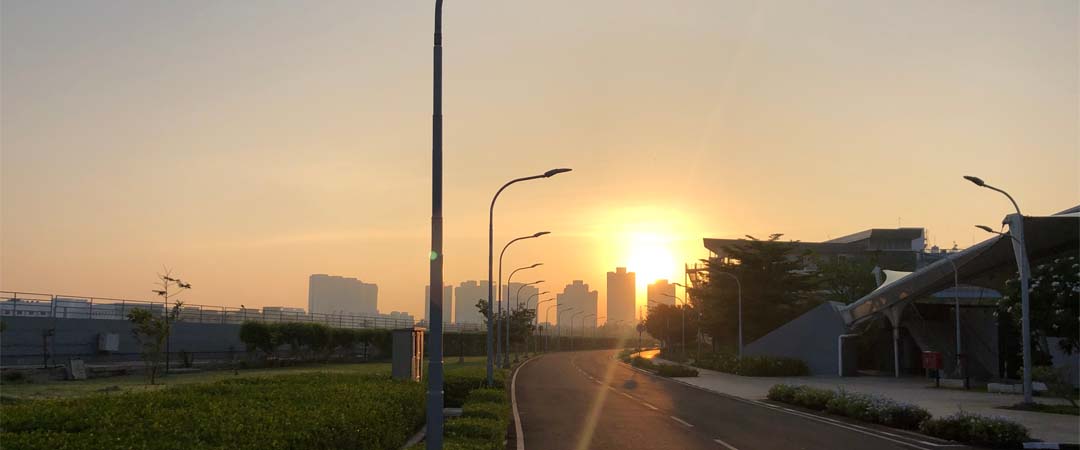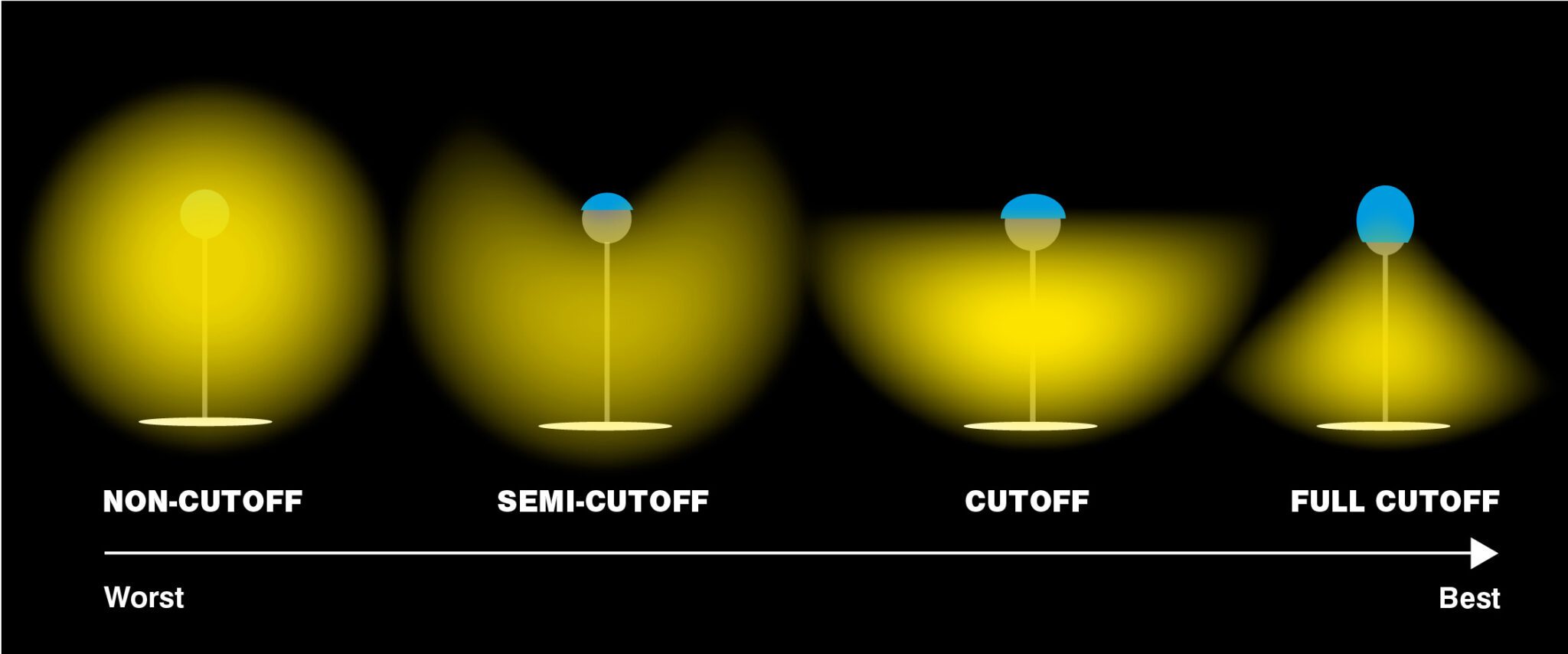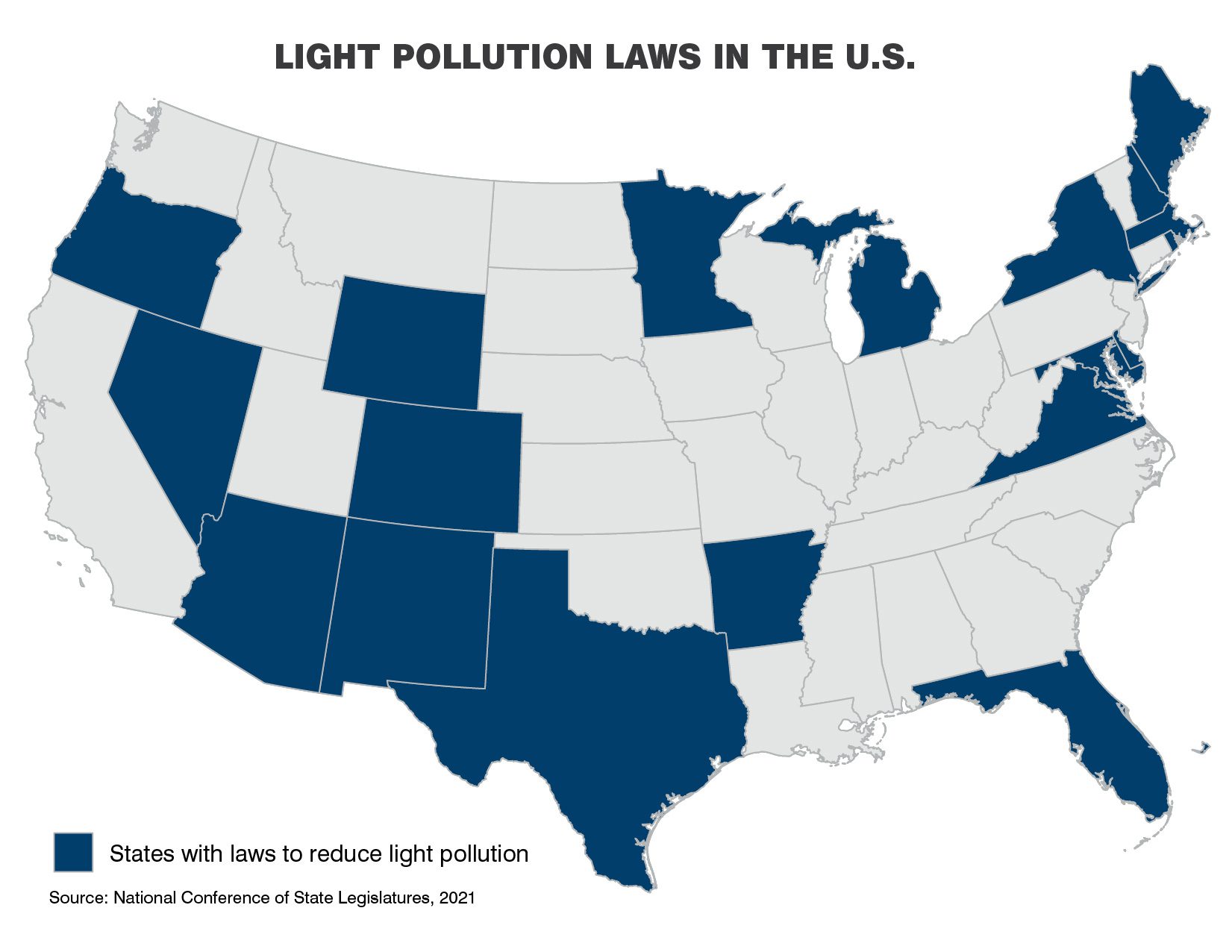By Mason Coudron, Category Analyst

Today, almost anything can be considered a pollutant: plastics, pesticides, lead, fossil fuels, excessive noise and even harsh lighting. In recent years, the International Dark-Sky Association (IDA) has made it their mission to regulate and enforce policy changes regarding outdoor lighting ordinances, so we can continue building a sustainable, healthy environment free of unnecessary, outdoor lighting.
You may have stumbled across the phrase “dark-sky compliant” on a recent lighting project, but you weren’t sure what fixtures qualified as such. Here’s what you need to know about the changes in the lighting industry.
Table of Contents
- What does dark-sky compliance mean?
- Why are states adopting outdoor lighting ordinances?
- What fixtures are dark-sky compliant?
- Where can I find local lighting ordinances?
- Navigating the dark-sky compliance journey
What does dark-sky compliance mean?
Dark-sky compliant light fixtures are designed to reduce light pollution, thus working in agreement with IDA’s mission to minimize glare, reduce light trespass and eliminate night sky pollution.
Dark-sky compliance is defined by the approval of outdoor lighting ordinances through the IDA Fixture Seal of Approval program, which declares:
A fixture must be fully shielded and emit no light above the horizontal plane. There shall be no sag or drop lenses, side light panels, uplight panels, etc. Approved fixtures shall employ warm-toned (3000K and lower) white light sources or may employ amber light sources or filtered LED light sources. If other CCTs or mounting options are available for the luminaire, a notation needs to be made on the web page, spec sheets, and order forms that 3000K or warmer, and fixed mounts must be ordered for IDA certification compliance.
Across the nation, states are increasingly adopting outdoor lighting ordinances. While policies vary from state to state, the IDA is a driving force behind many changes and dark-sky reinforcements.
When determining how to properly illuminate outdoor areas, IDA asks that you consider these five principles before implementing permanent, outdoor lighting ordinances.
Why are states adopting outdoor lighting ordinances?
Just like communities all over the world are doing their part to reduce or eliminate stereotypical environmental pollutants (e.g., fossil fuels, plastic, etc.), states have begun implementing outdoor lighting ordinances supplied by the IDA to better support dark-sky compliance.
Here are just a handful of consequences to harsh, unnecessary, outdoor lighting:

- The bird population suffers.
- Especially in circumstances where clouds, fog and rain affect the celestial cues of migratory birds, large bird populations are more likely to crash into buildings surrounded by disorienting city lights.
- Circadian rhythm is disturbed.
- Our sleeping patterns are “governed by the day-night cycle,” so being exposed to artificial light during the nighttime disrupts our body’s production of melatonin, a sleep-inducing hormone.
- Ecosystems are disrupted.
- For example, bats are light-sensitive creatures and have difficulty hunting for insects in areas where light is plentiful. Since insects are prone to gather around artificial light sources, bats are hesitant to hunt even though large populations of insects are congregated near these areas.
- Energy is wasted.
- IDA stated, “In an average year in the U.S. alone, outdoor lighting uses about 120 terawatt-hours of energy, mostly to illuminate streets and parking lots. That’s enough energy to meet New York City’s total electricity needs for two years!
- “IDA estimates that at least 30% of all outdoor lighting in the U.S. alone is wasted, mostly by lights that aren’t shielded. That adds up to $3.3 billion and the release of 21 million tons of carbon dioxide per year! To offset all that carbon dioxide, we’d have to plant 875 million trees annually.”
- Natural night sky heritage is being forgotten.
- The night sky has provided inspiration for science, religion, philosophy, art, literature and perspective for generations, but light pollution has stolen the opportunity from newer generations to experience, learn and grow curious from the natural night sky heritage because our surplus of artificial light has enforced harmful coverage of natural, starry nights.
Not only do countless ecosystems suffer from unnecessary, unregulated, outdoor lighting, but our population continues to be exposed to unhealthy and unsafe environments provided by fixtures that are not classified as dark-sky compliant.
What fixtures are dark-sky compliant?
In short, a full cutoff light fixture is best for preserving our natural night sky because it prevents light from being emitted on or above the horizontal plane. However, cutoff fixtures also pose as fair options for reducing outdoor light pollution because they keep harsh lighting from being emitted past the horizontal plane, which also helps to preserve the night sky.

While cutoff fixtures are dark-sky friendly, they do not provide the security of night-sky preservation that full cutoff fixtures do. If you are replacing outdoor lighting fixtures to comply with your local lighting ordinances, request fixtures that shield the light source to minimize glare and light trespass and facilitate better vision at night.
Please see examples of acceptable and unacceptable lighting fixtures.
Where can I find local lighting ordinances?
When researching local lighting ordinances, it is best to check with your local government directly or visit your city/state website and search for codes and ordinances.

Laws are constantly changing, and many states are opting to disclose outdoor lighting ordinances, so our nation can continue promoting dark-sky compliance and reduce light pollution.
In addition to adopting outdoor lighting ordinances, there are several states that have erected international dark sky communities, parks, reserves and sanctuaries. For years, small towns and cities near national parks have enforced lighting ordinances to preserve the night sky and natural ecosystems, but this trend has recently begun spreading to larger, urban areas — particularly on our coasts.
Navigating the dark-sky compliance journey
Light pollution continues to spread across the world, wasting precious resources, harming ecosystems and dimming our memory of what a natural, star-lit sky means for our livelihood.
If you haven’t already, research local lighting ordinances in your community and take these regulations to heart.
Read more:
UVC, UVA and Visible Light: What’s the Best Disinfection Solution for You?